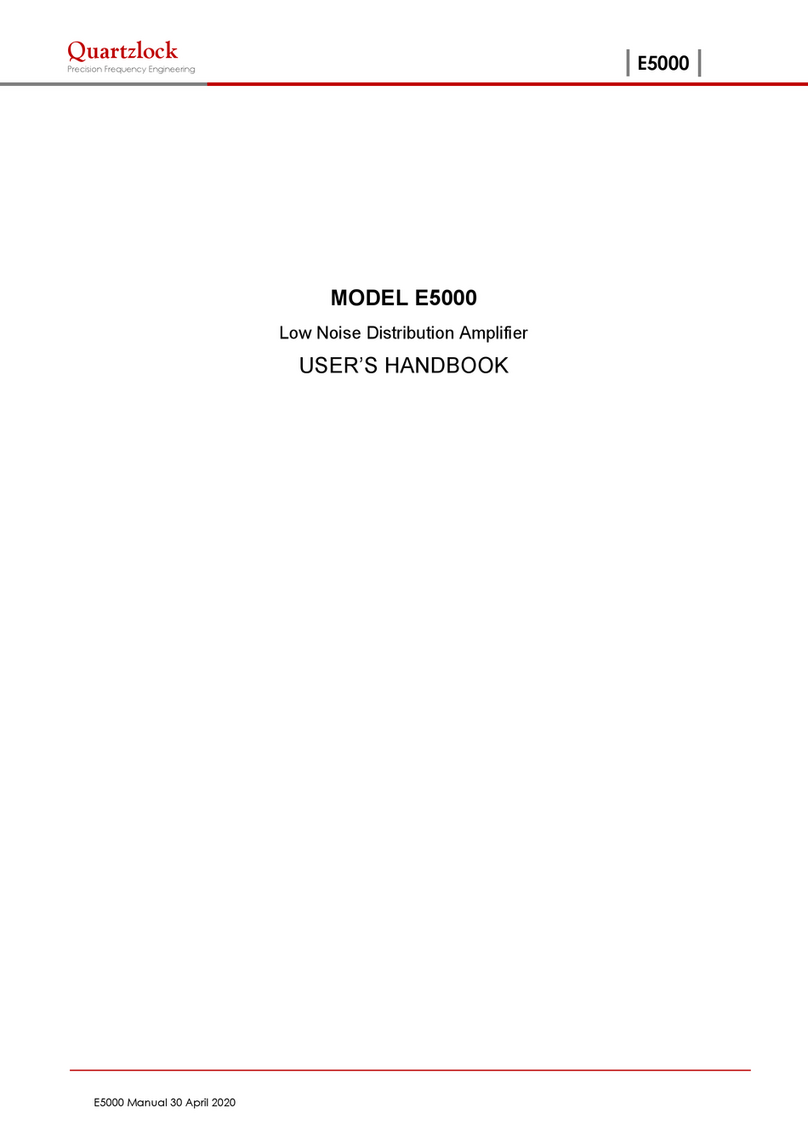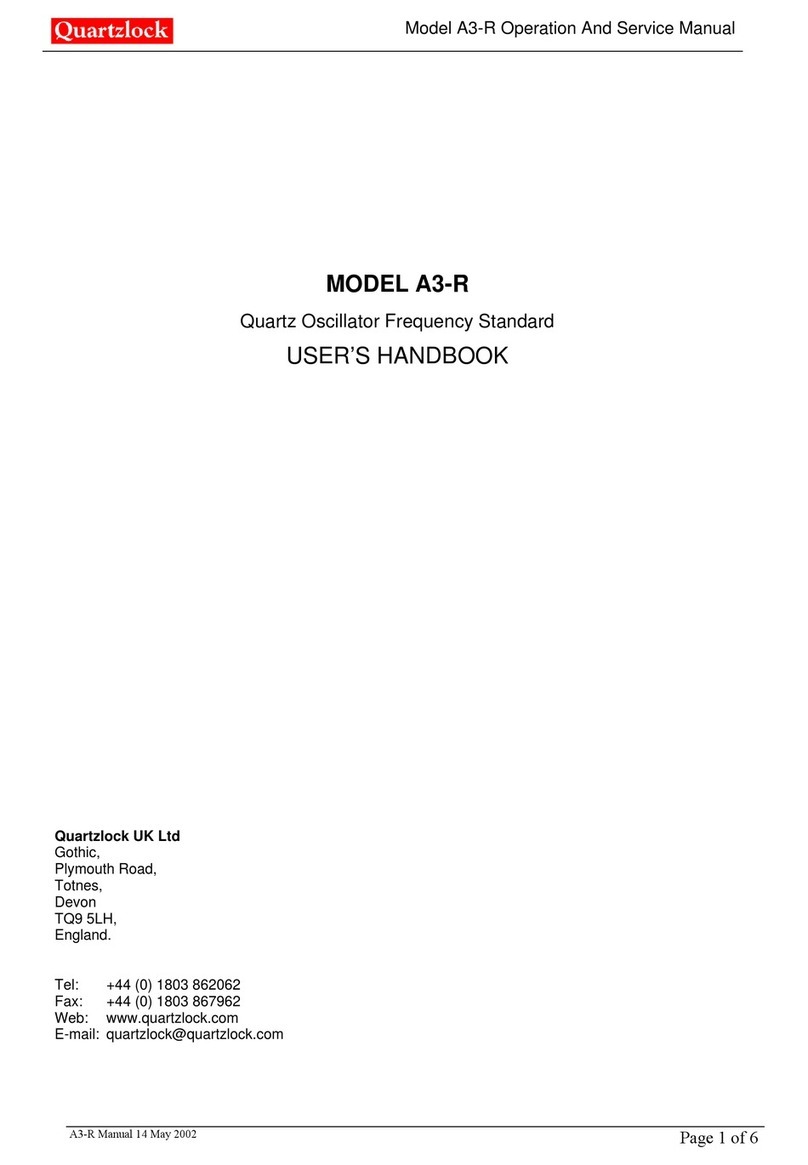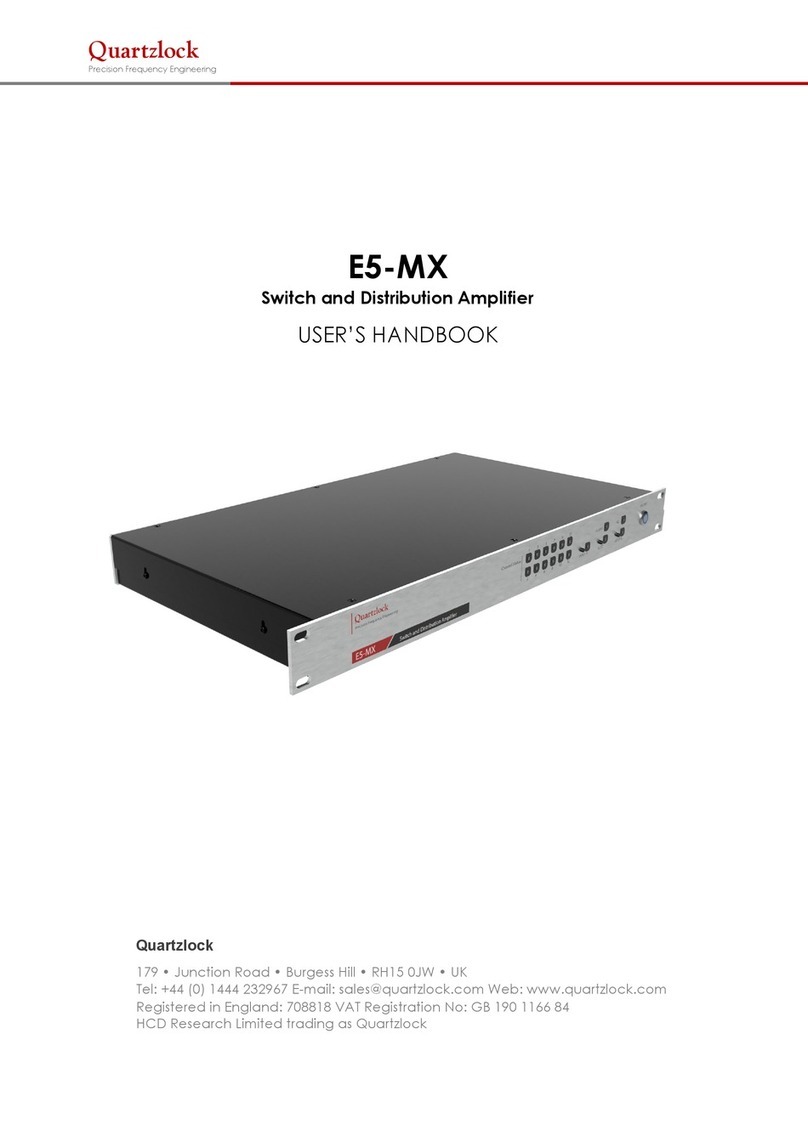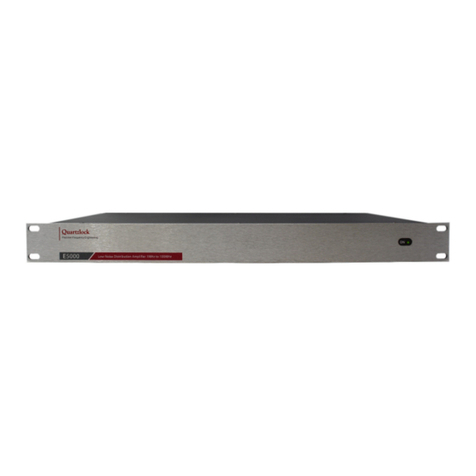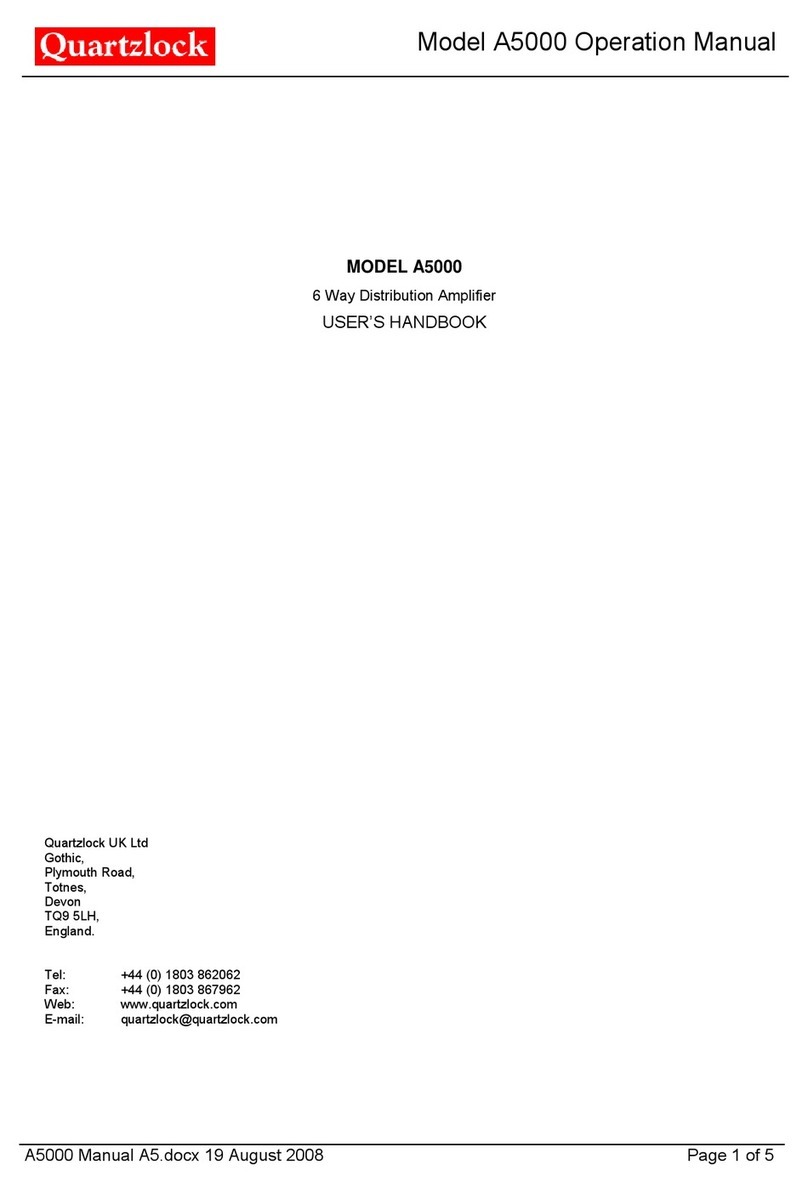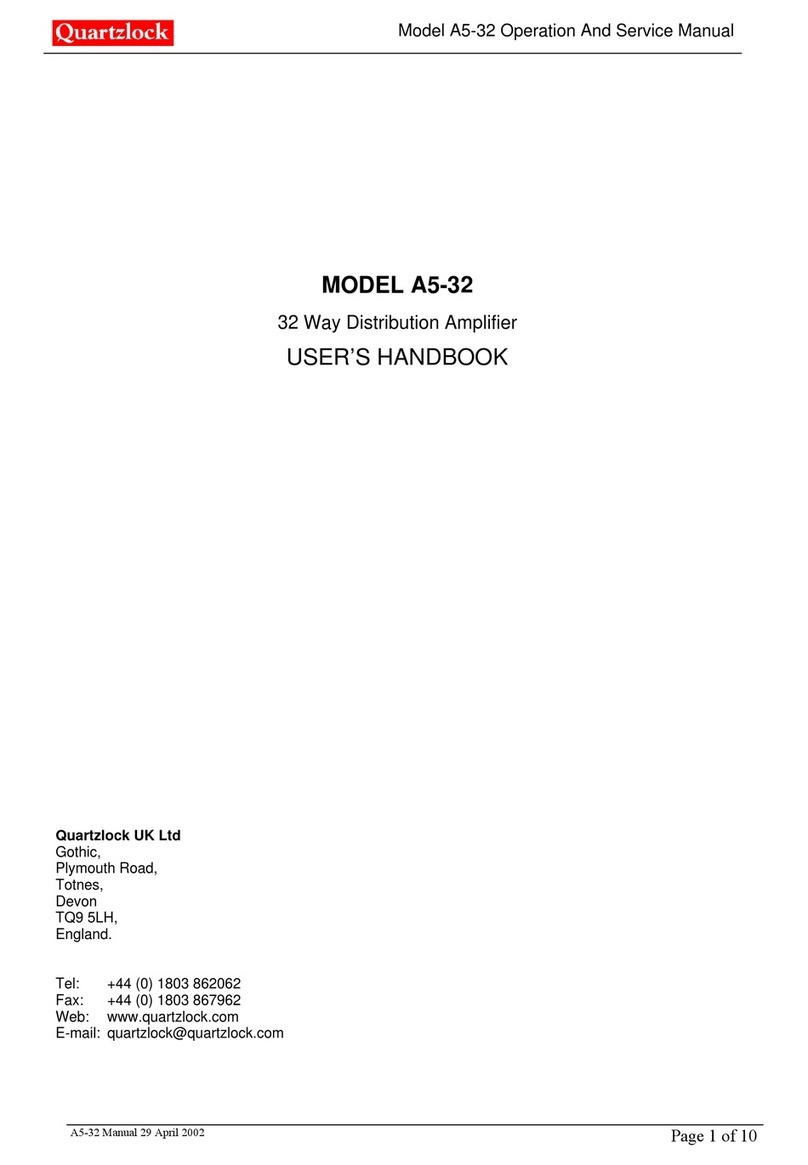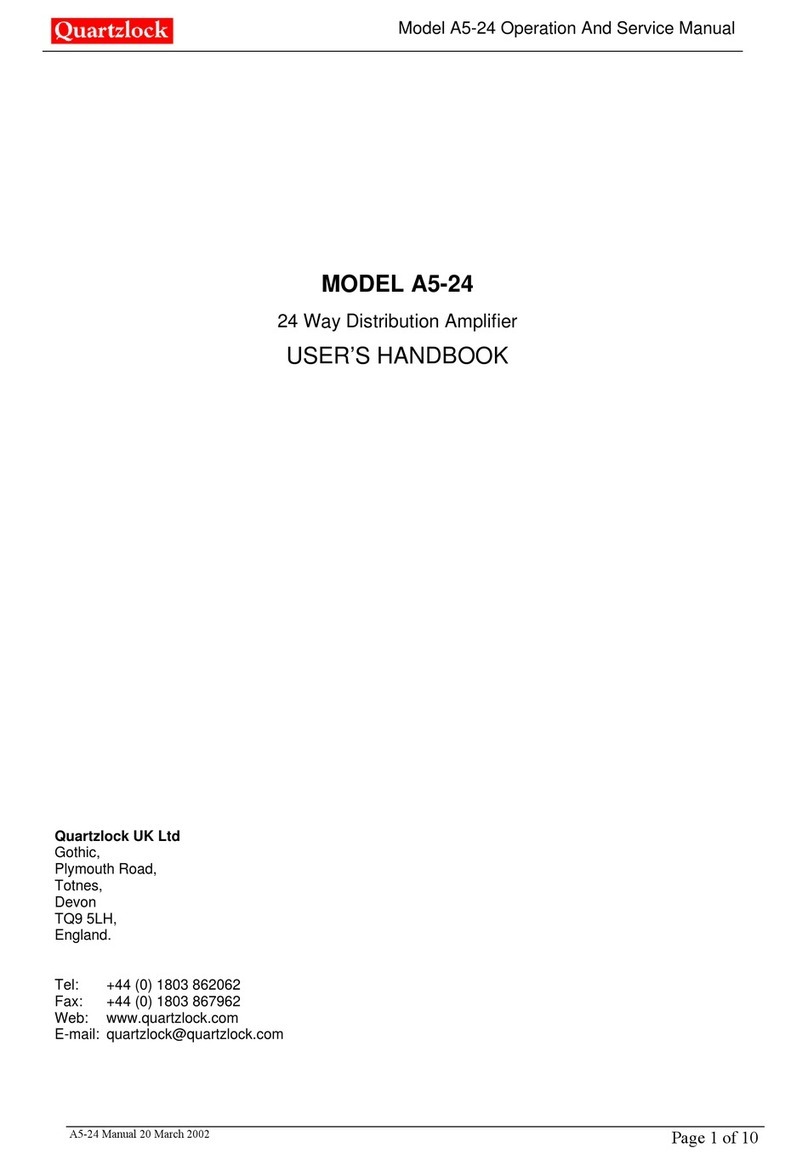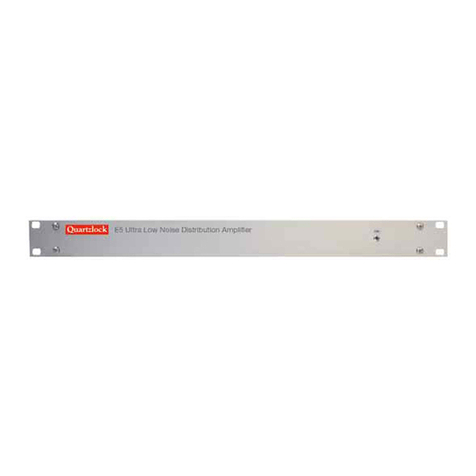Model A5-12 Operation & Service Manual
A5-12 Manual A5 21 January 2005 Page 7
3 Circuit Descriptions
3.1 Output Amplifier
The output amplifier is a differential amplifier based on a common emitter,
common base, and common collector cascade circuit. TR7 and TR8 are the
common emitter input stages. The emitter resistors R11 and R23, and R12 set the
transconductance. A feedback circuit comprising TR4/TR5 and TR9/TR10 sets the
DC collector current in each transistor. The voltage across the emitter resistors is
set equal to a 2.5V reference voltage fed to the amplifier from the "BIAS" pin. The
active control of DC current also reduces the current fluctuations due to 1/f noise
in the transistors. This reduces the phase noise.
TR2 and TR3 are the common base stages. These provide most of the reverse
isolation in the amplifier.
The load network, T2, R19, L1, sets the AC voltage gain of the amplifier. T2 is a
wide band choke, and L1 provides high frequency compensation.
The output stage of the amplifier is common collector stages TR1 and TR6. R1 and
R3 set 100Ωoutput impedance for each transistor. When combined in T1, a 50Ω
output impedance results. Due to the output impedance, the gain of the output
stages is –6 dB when the amplifier is loaded with 50Ω.
The voltage gain of the entire amplifier is about 12 dB, and it is capable of an
output power of about 17 dBm into 50Ω. At the nominal output power of 13 dBm,
the second harmonic distortion is less than -60 dBc due to the differential design.
Third harmonic distortion is less than -40 dBc. The bandwidth is +/-1 dB from 2
MHz to 100 MHz. The gain falls by a further 1 dB at 1 MHz.
A tuned version of the output amplifier is possible by replacing T2 by a tuned
transformer T4, and by adding C21. This reduces harmonic distortion further, and
also reduces integrated wide band noise.
Cutting a track, enabling an isolated output option to be available on some
products. The network associated with D1 rectifies a sample of the AC output and
turns on TR11. This provides an output monitor point on J2. The amplifier is
powered from +18V DC and +12V DC supplies. The power consumption is about
100 mA at 1 V and 40 mA at 12V.
3.2 Mother Board
The main board includes the input amplifier, the 12-way splitter, the power supply,
and 12 output amplifier modules.
